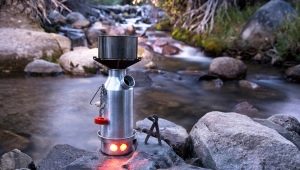Flasks: features, types and tips for choosing
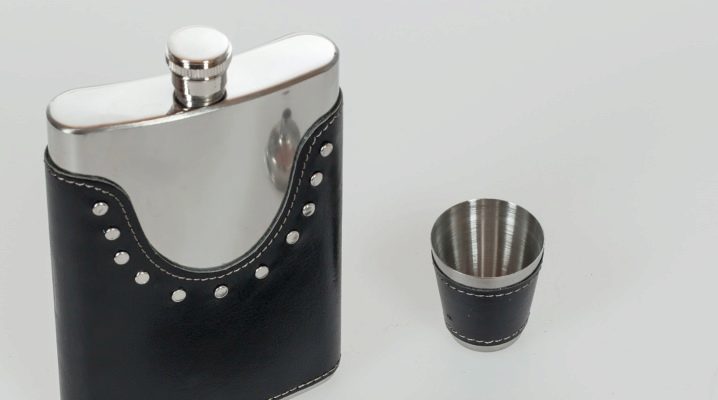
Flasks are an integral part of tourist equipment, hiking or running equipment, military and sailor uniforms. Centuries ago, a person's life depended on having a waterskin at hand. And representatives of the aristocracy used this type of container for storing alcoholic beverages. And they looked pretty much the same. Today on sale there are camping plastic and soft flasks for water, metal souvenir or gift models, leather and glass options.
How to choose the right hiking gear? What capacity should be a convenient flask for water or other drinks? Which manufacturers are the market leaders today? All these points should be clarified in advance in order to make the right choice when buying a flask.
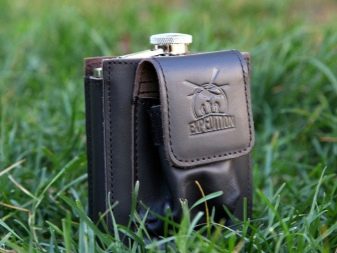

Peculiarities
A flask is a special type of bottle that has a flat, round or oval shape. It got its name from the German flacher and can have both compact dimensions and a rather significant volume. For example, milk cans are also most often referred to as flasks, and in a field kitchen, drinking water is stored in such containers.
Among the characteristic features of this type of containers can be noted the presence of a screw-on plastic or metal stopper. Under it there may be a sealing insert or thread. Models with a nipple are also available, allowing you to drink without wasting time unscrewing the cap.
Military samples also have other useful options. In particular, a flask for water can be supplied with a fabric cover, which ensures better preservation of the temperature of the liquid in the heat, or a belt for transporting

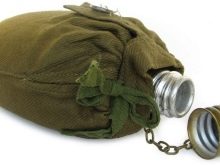
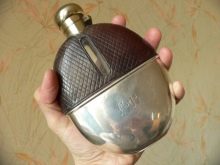
materials
Modern manufacturers most often use for the manufacture of flasks for hiking, souvenir use, and storage of alcohol metals that do not chemically react with liquids.
Metal products are presented in several options.
- From stainless steel. The classic steel flask corrodes too easily, the iron surface is not hygienic. Stainless metal is devoid of these shortcomings, has a maximum service life, is suitable for use under water, alcoholic beverages. They are usually made in the form of a flat oval, have a small capacity - from 85 to 340 grams.
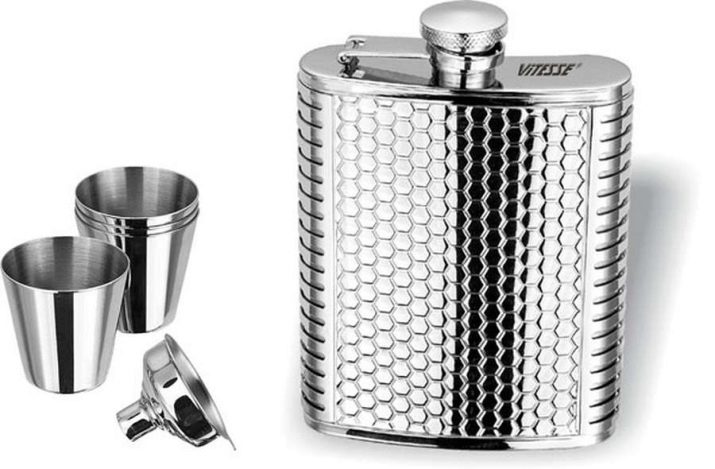
- Aluminum. Traditional army solutions, inexpensive and functional, are considered the best in the field of tourism and are used for hunting. Among their obvious advantages are low weight, hygiene, chemical neutrality, large capacity.
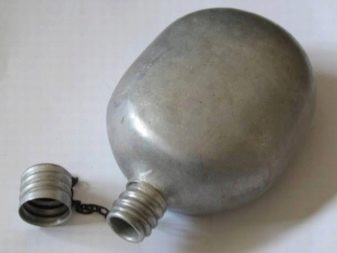
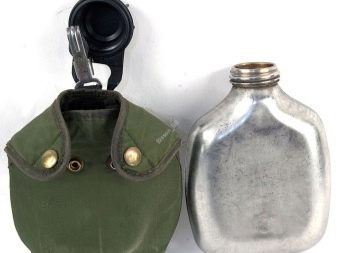
- Silver. Souvenir or gift attribute, which is difficult to imagine on a hike. Such accessories are quite expensive, they can be covered with exclusive engraving. The noble metal does not oxidize, retains the taste and aroma of the drink. Due to their heavy weight, it is not customary to carry massive silver flasks with you - it is rather a status element in the interior.

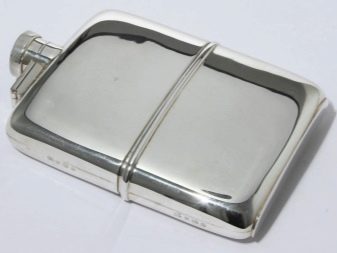
A soft leather flask is considered exotic today, but such solutions are quite common among homemade options. Similar varieties are used by shepherds in mountainous areas.A civilized alternative to such a solution is a plastic flask made from food-grade polymers. It can be oval or rectangular in shape and resemble a classic water bottle for sports.
But plastic models have a significant drawback - they are single-layer, which is why they quickly heat up or cool down (depending on the state of the environment).
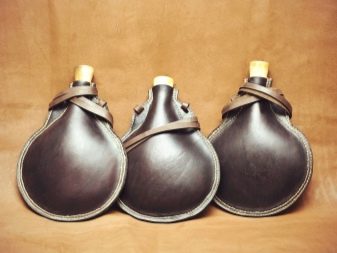
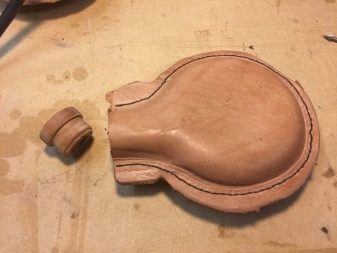
What are they?
All existing types of flasks can be conditionally divided into categories according to their purpose and type of performance. It is depending on this classification that the use of this useful accessory is determined. For example, models in a case are most often focused on maintaining the temperature of the liquid inside for a long time. Tarpaulin covers can even be wetted - in the process of heat transfer, an obstacle will be created for heating water.
A foldable or soft flask will be useful in extreme conditions, taking up little space in a backpack. The flat pocket version or designed to be worn on the hip is suitable for taking medicine or alcohol with you. These products are made of metal, most often of steel. Barrel-shaped models are used to store water, with compact dimensions they can have a capacity of up to 2 liters.
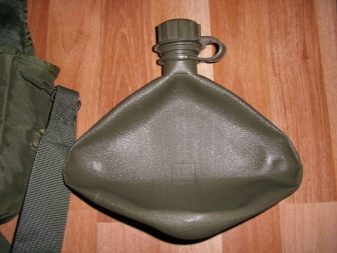
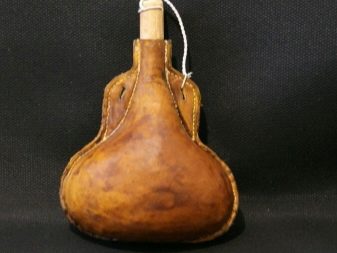
According to its purpose, the flask is divided into 4 types.
- Marching. Most spacious and easy to use. Camping flasks are used as the main source of clean and fresh water. They should have an ergonomic shape, convenient fastening, high tightness.
- Tourist and hunting. Sports accessories and accessories for a long stay in a forest or field must comply with safety requirements, be lightweight, highly reliable, and be easy to use.
- Military. Army accessories are especially highly valued in authentic designs. Collectors and reenactors are willing to pay a lot of money for such rarities. However, even in the modern format, military flasks are valued for their convenience, spaciousness, and ease of execution.
- Souvenir. Usually made of precious metals (gold, silver), inlaid with stones or engraved. Rather, a memorable gift than a functional product, but there are also options that are quite suitable for storing alcoholic beverages.
A careful examination of aluminum camping flasks and other options for short-term storage of liquids can help you make the right choice based on the purpose and use of these accessories.
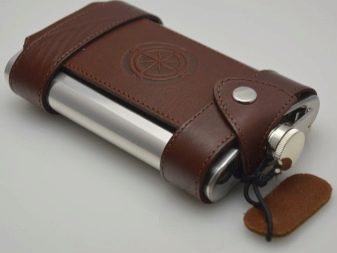


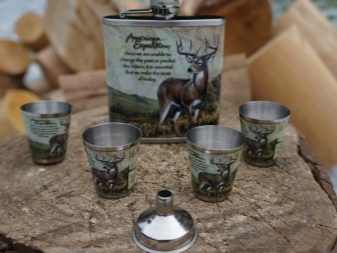
Manufacturers overview
Below are the market leaders for this specific product.
- Stanley. A US company specializing in the manufacture of stainless steel bottles. The brand produces compact individual flasks and travel containers of various sizes. There are versions for a pint of beer, options for a real traveler with a shoulder strap and models for a couple of shots of spirits.


- clean bottle. American flask manufacturer who pioneered dishwasher-safe products. Flasks are made in various versions: for tourism and running, cycling, crossfit.
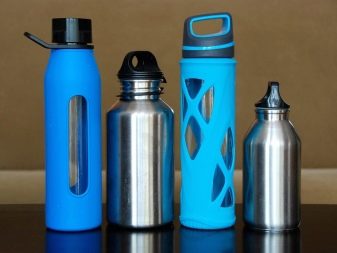

- Klean Kanteen. American manufacturer specializing in the creation of reusable stainless steel flasks. In shape, they are more reminiscent of water bottles, but with a threaded cap or with another type of fastening. There are Growlers for beer, the Classic series with drinkers and Wide without them.
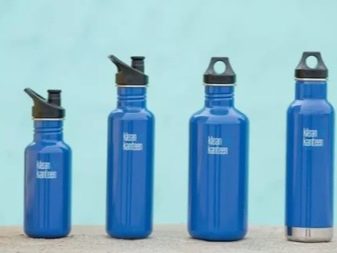
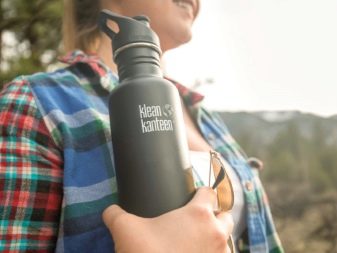
- Nalgene. American company engaged in the creation of plastic bottles, flasks. Products for tourism have been produced since 1970, today the assortment includes special containers for storing medicines, water bottles for cycling, running, outdoor activities.

- Sigg. Swiss manufacturer of flasks for hiking and storing alcoholic beverages. Polypropylene and aluminum sports and tourism models are made in the EU, glass and stainless steel souvenirs are made in China. The brand pays a lot of attention to product design. For a long time, Sigg also produced fuel tanks for climbers and hikers.

How to choose?
To make the right choice when buying a flask, you should pay attention to important parameters.
- Manufacturing material. Wooden or leather exotic options today can only be considered as souvenirs. Choosing between metal and plastic, you should give preference to a more durable solution. Military-style steel models are quite roomy, ergonomic, have a convenient mount and are more like mini-thermoses due to the multi-layered wall construction. Plastic is only suitable for short trips or hikes, it absorbs odors, and can release hazardous substances when in contact with direct sunlight.
- The presence of a cover. A camping flask needs it in order to maintain the optimum temperature for as long as possible. Models for souvenir or short-term use may not have an additional shell. If there is a cover, it is better to choose leather rather than cloth varieties, or take a version with a thermos effect.
- Volume. Souvenir and alcohol options have a minimum capacity of 3-6 oz or 9-12 oz for multiple people.Metal tourist and army flasks reach a volume of 1 liter. For one person, an option with a volume of 0.5-0.6 liters is enough - this is enough for a short transition, a marathon race or a long walk.
- The form. Tourists are increasingly choosing rounded individual flasks, more reminiscent of familiar sports water bottles. For alcoholic beverages, metal flat or slightly concave containers are used. Oval versions are most often referred to as traveling ones - the capacity of such a vessel is always higher than other options.
- Mounting method. If carrying in a bag or backpack seems inconvenient, you can choose a flask on a waist belt or chain, complete with a carabiner. There are also special versions for outdoor enthusiasts, cyclists.
- Closing method and lid design. The best choice would be a model with a plug-in stopper and a screw cap on top. Modern versions may have a different type of lock and a “drinker” spout on top, covered with a cover.
Only by taking into account all these factors, it is possible to avoid mistakes and get a drinking container that is convenient for long-term use, hiking, and storing expensive alcohol.
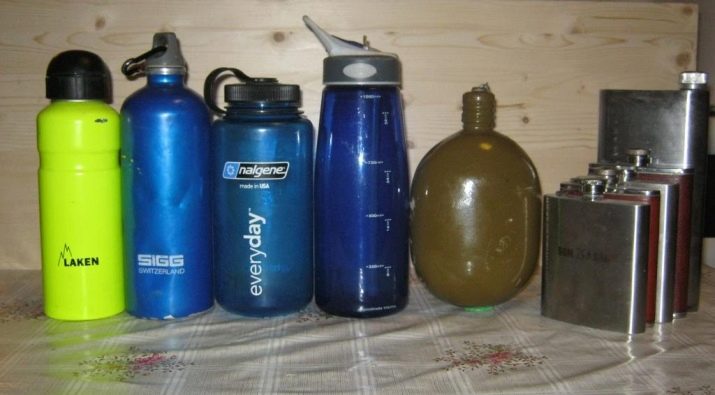
Care rules
The flask is a personal item and must be kept clean. The first and most important rule of care is regular washing. If a liquid with a characteristic odor and taste has been stored in the container for a long time, the walls may acquire a characteristic aroma. In this case you need to pour raw rice inside, pour warm water and shake the flask closed with a lid well. After that, the contents are poured out, the container is thoroughly rinsed.
Do not beat off extraneous and pungent odors with aggressive chemical cleaners. It will be quite difficult to rinse the flask after contact with such dangerous reagents. Harmless products are much more suitable for the care of metal and plastic products.
Baking soda and citric acid can act as a cleaning agent and odor neutralizer. A clean flask is thoroughly dried before being refilled or stored.

When using the container, it is worth taking care of the neck - it is contraindicated in blows and other damage. When using liquid, the rule of personal hygiene is strictly observed. It is not recommended to share this item with unfamiliar people; in extreme cases, you can pour water, alcohol into a separate container. Do not mix products with different textures and tastes in the same container.
The outer parts of the flask made of metal (silver, aluminum, steel) are polished with a cloth or other cloth. Leather products are polished using colorless shoe care products based on natural wax. Tin flasks clean a special paste or a mixture of vinegar, flour and salt. It is applied to the surface, and then, after a while, washed off with water.
Proper care is a prerequisite for the long and successful operation of the flask. By keeping the container for water and other drinks in order, you can be ready at any time to pack for a hike or a sporting event, hunting or fishing.


See below for an overview of camping flasks and water containers.




























